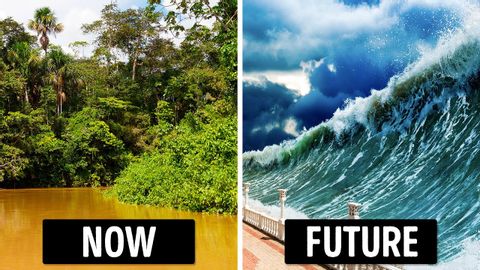
Subtitles & vocabulary
Will We Lose Oxygen If We Lose the Amazon Rainforest?
00
大文 posted on 2020/04/05Save
Video vocabulary
essential
US /ɪˈsɛnʃəl/
・
UK /ɪ'senʃl/
- Adjective
- Extremely or most important and necessary
- Fundamental; basic.
- Noun
- A concentrated hydrophobic liquid containing volatile aroma compounds from plants.
B1TOEIC
More compromise
US /ˈkɑmprəˌmaɪz/
・
UK /'kɒmprəmaɪz/
- Verb (Transitive/Intransitive)
- To weaken your position or views
- To lessen your demands so as to reach agreement
- Noun (Countable/Uncountable)
- When you lessen your demands to get agreement
B1
More evolve
US /ɪˈvɑlv/
・
UK /ɪ'vɒlv/
- Verb (Transitive/Intransitive)
- To develop certain features
- To develop or change slowly over time
B1
More atmosphere
US /ˈætməˌsfɪr/
・
UK /'ætməsfɪə(r)/
- Noun (Countable/Uncountable)
- Air around us
- Feeling or mood of a place
A2
More Use Energy
Unlock All Vocabulary
Unlock pronunciation, explanations, and filters
